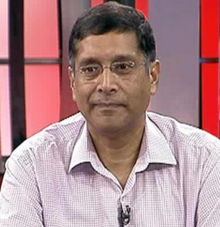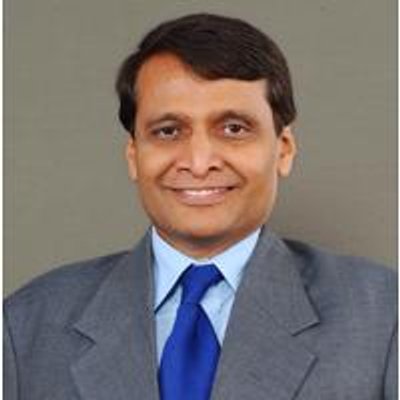I know this piece is not going to go down well with a section of readers. Nevertheless, I think this is an important point and needs to be made.
In January 2016, the prime minister Narendra Modi during the course of a speech had said: “Why is it that subsidies going to the well-off are portrayed in a positive manner? Let me give you an example. The total revenue loss from incentives to corporate tax payers was over Rs 62,000 crore… Dividends and long-term capital gains on shares traded in stock exchanges are totally exempt from income tax even though it is not the poor who earn them.”
Not surprisingly, the Economic Survey released on February 26, 2016, under the leadership of Arvind Subramanian, the chief economic adviser, has a chapter titled Bounties for the Well-Off, dedicated to the implicit subsidies on offer to the rich.
The Economic Survey focuses on “seven areas: small savings schemes, kerosene, railways, electricity, LPG, gold, and aviation turbine fuel (ATF),” and calculates the implicit subsidies available to the rich. The total cost of the implicit subsidies works out to Rs 1.03 lakh crore, as per the survey. Now that’s a huge number.
One of the investment avenues that the Economic Survey calculates an implicit subsidy on is the public provident fund(PPF) scheme in which an individual can invest up to Rs 1.5 lakh every year. While calculating the taxable income, the amount invested in the PPF scheme can be claimed as a deduction. Further, the amount that the investor gets on maturity is also tax-free. This pushes up the effective returns on PPF.
As the Economic Survey points out: “The effective returns to PPF deposits are very high, creating a large implicit subsidy which accrues mostly to taxpayers in the top income brackets. The magnitude of this implicit subsidy is about 6 percentage points – approximately Rs 12,000 crore in fiscal cost terms.”
Along similar lines, the subsidy on the cooking gas cylinder is also captured by the rich. As the Survey points out: “LPG consumers receive a subsidy of Rs 238.51 per 14.2 kg cylinder7 (as in January 2016), which amounts to a subsidy rate of 36 per cent (ratio of subsidy amount to the market price). It turns out that 91 per cent of these subsidies are accounted for by the better-off as their share of consumption of LPG in the total consumption is about 91 per cent; while the poor account for only 9 per cent of LPG consumption and hence only 9 per cent of subsidies go to them.”
What Subramanian doesn’t talk about in the Economic Survey, are the issues on which Modi talked about in January i.e. the implicit subsidy on there being no tax on dividends earned through shares as well as no long-term capital gains tax on selling shares. The reason for that is obvious. It was said that prime-minister Modi was wrongly briefed on the issue at that point of time. And that is largely correct.
Companies distributing dividends, do pay a dividend distribution tax(DDT) to the government. Hence, to that extent the dividend is not tax free in the hands of the investor. If there was no DDT, the shareholders would have received a higher dividend. Nevertheless, the tax is just a better way for the government to collect tax, than collecting it from the investors who earn dividends and then hoping that they declare the divided while filing their tax returns and pay a tax on it.
As far as long term capital gains on shares are concerned, currently there are no taxes to be paid, if the investor sells shares, after holding them for a period of one year or more. The government collects a securities transaction tax (STT) every time an investor buys or sells shares, through a stock exchange.
The STT is collected in lieu of there being no long-term capital gains on selling of shares. In 2014-2015, the government collected close to Rs 6,000 crore through the STT. Also, like DDT, STT is just an easier way of collecting tax, in comparison to the long-term capital gains tax.
Nevertheless, it still does not explain why Subramanian did not calculate the implicit subsidy on there being no long-term capital gains tax on selling shares. A calculation would have told us whether the long-term capital gains tax that could have possibly been collected is more than the amount that the government is collecting through STT.
If the difference is substantial, then the government needs to look at taxing long-term capital gains as well, in the years to come. Obviously, this move will not go down well with the rich who benefit from this implicit subsidy. As David Foster Wallace writes inThe Pale King: “We’ve changed the way we think of ourselves as citizens. … We think of ourselves now as eaters of the pie instead of as makers of the pie.”
Also, it needs to be pointed out that many stock market investors do not like the idea of a long-term capital gains tax on stocks. They also justify the short term capital gains tax at 15%. This rate is much lower than the highest rate of 30% that needs to be paid on all other kinds of income.
The logic is as follows. Stock market investment is risky in comparison to other forms of investing where the amount of money invested is more or less guaranteed. Also, through the stock market entrepreneurs raise capital and investors need to be encouraged to invest in new businesses, and hence, there is no long-term capital gains tax on stocks.
While this may have been valid in the twentieth century, it is worth asking whether this continues to make sense. As the celebrated British economist John Kay writes in Other People’s Money—Masters of the Universe or Servants of the People? : “The first companies to obtain listings on modern markets were companies like railways and breweries, with large requirements for capital for very specific purposes. Building a railway is expensive, and once you have built it the only thing you can do with it is run trains. You cannot use a brewery except to brew beer. Early utilities and manufacturing corporations raised large amounts of money in small packets from private individuals.”
But does that continue to hold good? Do entrepreneurs continue to use the stock market to raise capital for new ventures? As Satyajit Das writes in The Age of Stagnation: “The nature of stock markets has been changed by alternative source of risk capital: the high cost of a stock market listing, particularly increasing compliance costs; increased public disclosure and scrutiny of activities, including management remuneration; and a shift to different forms of business ownership, such as private equity.”
What this means is that more and more entrepreneurs are now raising money through other routes, in the initial stages of their business. This becomes clear in the Indian context from the fact that the number of initial public offerings have come down over the years. But entrepreneurs continue to raise through other routes like private equity, venture capitalists, debentures etc.
The stock market only comes into the picture when these initial investors want to offload their stocks in the firm. As Kay puts it: “Stock market is not a way of putting money into companies, but a means of taking it out.”
Hence, all the logic about investors needing to be encouraged to invest in new businesses doesn’t really hold anymore because most of the time, companies now come to the stock market only when they are looking for an exit option for their big initial investors.
In fact, Subramanian and his team could have done some analysis around this issue and told us what portion of the initial public offerings over the last few years raised fresh capital and what portion was investors trying to exit. This is something that the chief economic adviser clearly needs to look at in the next Survey.
And as far as risk of investing in the stock market is concerned. That still remains. But that is the choice that the investor investing in the stock market is making. Why should the government compensate him for it? Beats me.
The column originally appeared in the Vivek Kaul Diary on February 29, 2016


